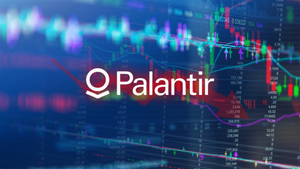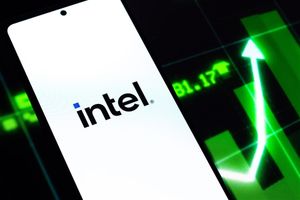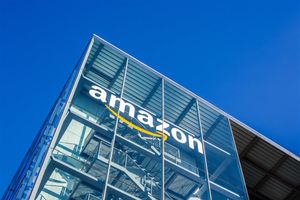
Renewable energy and infrastructure solutions provider Gibraltar Industries (NASDAQ: ROCK) fell short of the market’s revenue expectations in Q4 CY2024, with sales falling 8.1% year on year to $302.1 million. On the other hand, the company’s full-year revenue guidance of $1.43 billion at the midpoint came in 2.2% above analysts’ estimates. Its non-GAAP profit of $1.01 per share was 11.4% above analysts’ consensus estimates.
Is now the time to buy Gibraltar? Find out by accessing our full research report, it’s free.
Gibraltar (ROCK) Q4 CY2024 Highlights:
- Revenue: $302.1 million vs analyst estimates of $307.9 million (8.1% year-on-year decline, 1.9% miss)
- Adjusted EPS: $1.01 vs analyst estimates of $0.91 (11.4% beat)
- Adjusted EBITDA: $46.75 million vs analyst estimates of $44.27 million (15.5% margin, 5.6% beat)
- Management’s revenue guidance for the upcoming financial year 2025 is $1.43 billion at the midpoint, beating analyst estimates by 2.2% and implying 8.9% growth (vs -4.8% in FY2024)
- Adjusted EPS guidance for the upcoming financial year 2025 is $4.93 at the midpoint, beating analyst estimates by 3.8%
- Operating Margin: 8.2%, down from 10.4% in the same quarter last year
- Free Cash Flow Margin: 4.7%, up from 1.8% in the same quarter last year
- Market Capitalization: $1.77 billion
Company Overview
Gibraltar (NASDAQ: ROCK) makes renewable energy, agriculture technology and infrastructure products. Its mission statement is to make everyday living more sustainable.
Home Construction Materials
Traditionally, home construction materials companies have built economic moats with expertise in specialized areas, brand recognition, and strong relationships with contractors. More recently, advances to address labor availability and job site productivity have spurred innovation that is driving incremental demand. However, these companies are at the whim of residential construction volumes, which tend to be cyclical and can be impacted heavily by economic factors such as interest rates. Additionally, the costs of raw materials can be driven by a myriad of worldwide factors and greatly influence the profitability of home construction materials companies.
Sales Growth
A company’s long-term sales performance signals its overall quality. Even a bad business can shine for one or two quarters, but a top-tier one grows for years. Over the last four years, Gibraltar grew its sales at a mediocre 6.1% compounded annual growth rate. This was below our standard for the industrials sector and is a rough starting point for our analysis.
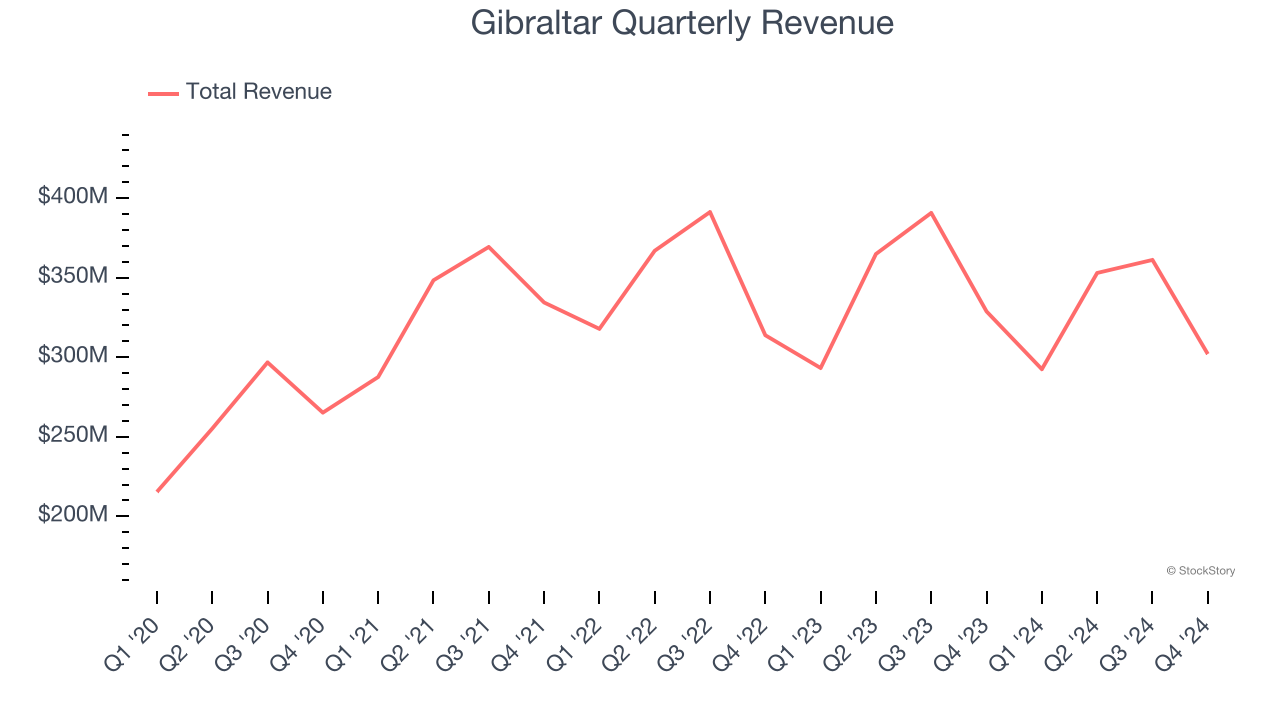
Long-term growth is the most important, but within industrials, a stretched historical view may miss new industry trends or demand cycles. Gibraltar’s history shows it grew in the past but relinquished its gains over the last two years, as its revenue fell by 3% annually. Gibraltar isn’t alone in its struggles as the Home Construction Materials industry experienced a cyclical downturn, with many similar businesses observing lower sales at this time. 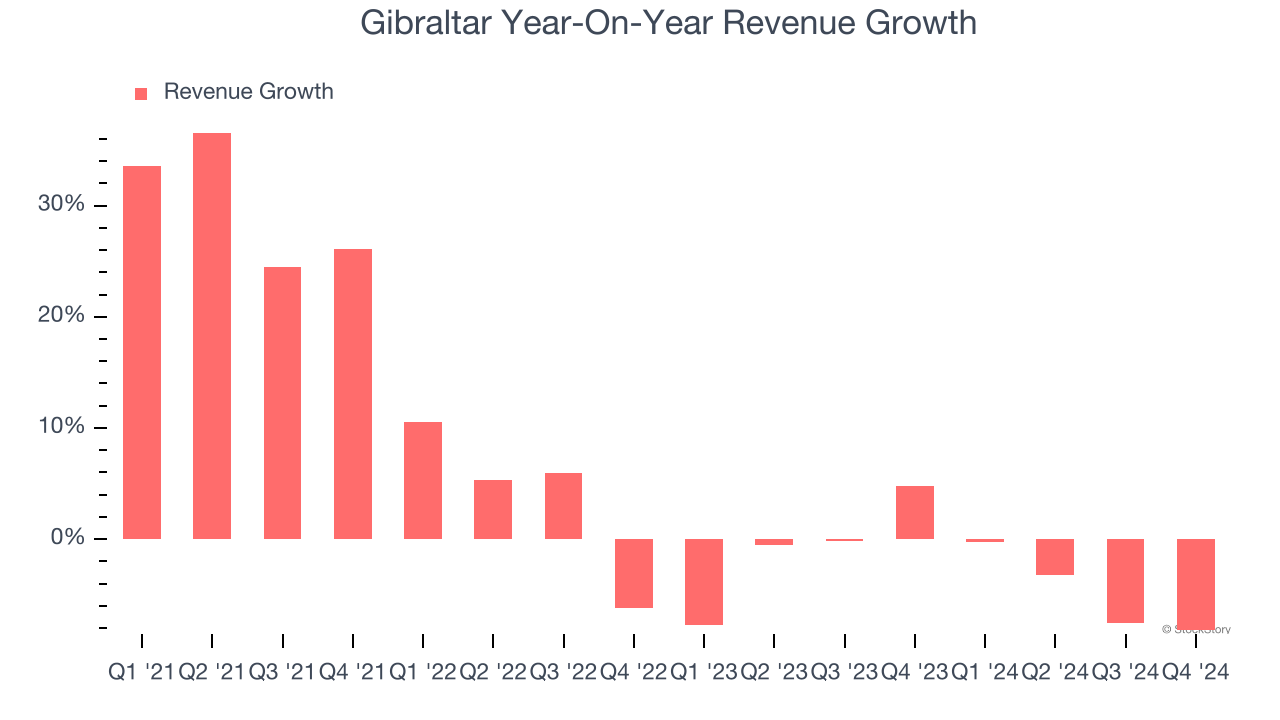
This quarter, Gibraltar missed Wall Street’s estimates and reported a rather uninspiring 8.1% year-on-year revenue decline, generating $302.1 million of revenue.
Looking ahead, sell-side analysts expect revenue to grow 7.8% over the next 12 months, an improvement versus the last two years. This projection is above average for the sector and implies its newer products and services will fuel better top-line performance.
Unless you’ve been living under a rock, it should be obvious by now that generative AI is going to have a huge impact on how large corporations do business. While Nvidia and AMD are trading close to all-time highs, we prefer a lesser-known (but still profitable) stock benefiting from the rise of AI. Click here to access our free report one of our favorites growth stories.
Operating Margin
Operating margin is one of the best measures of profitability because it tells us how much money a company takes home after procuring and manufacturing its products, marketing and selling those products, and most importantly, keeping them relevant through research and development.
Gibraltar has managed its cost base well over the last five years. It demonstrated solid profitability for an industrials business, producing an average operating margin of 10.7%. This result was particularly impressive because of its low gross margin, which is mostly a factor of what it sells and takes huge shifts to move meaningfully. Companies have more control over their operating margins, and it’s a show of well-managed operations if they’re high when gross margins are low.
Looking at the trend in its profitability, Gibraltar’s operating margin might have seen some fluctuations but has generally stayed the same over the last five years , highlighting the long-term consistency of its business.
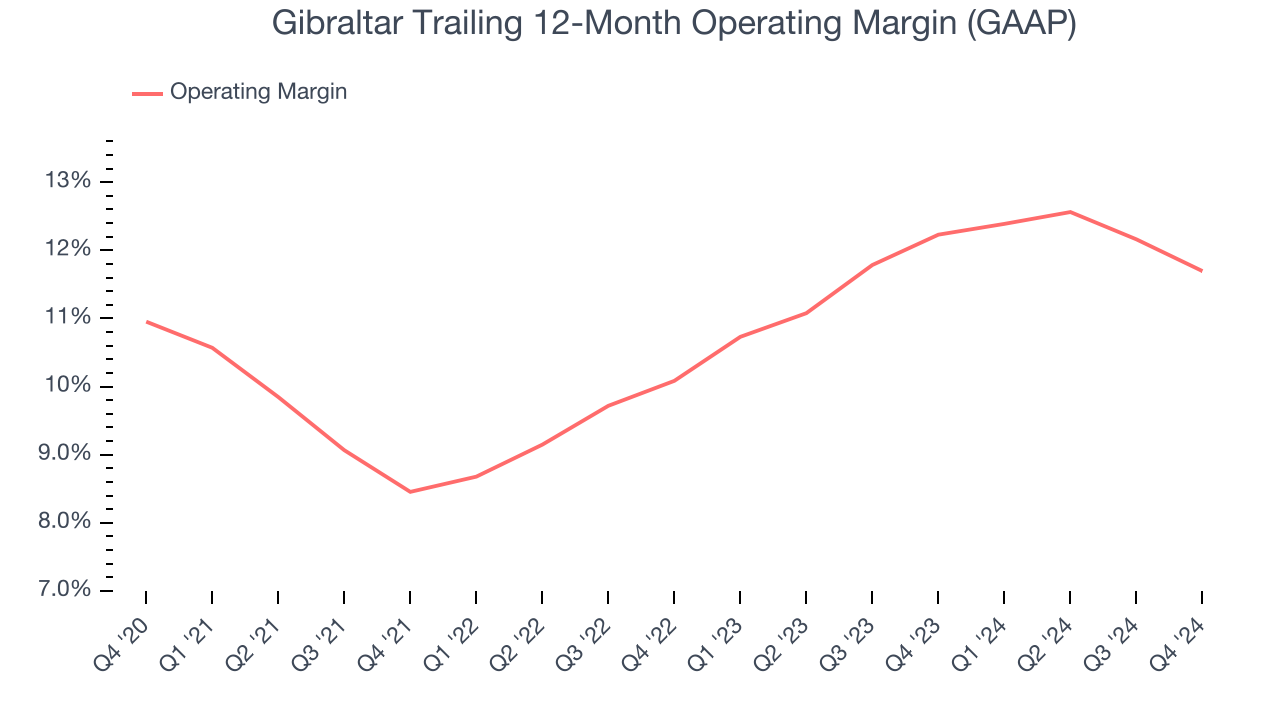
In Q4, Gibraltar generated an operating profit margin of 8.2%, down 2.2 percentage points year on year. Since Gibraltar’s operating margin decreased more than its gross margin, we can assume it was recently less efficient because expenses such as marketing, R&D, and administrative overhead increased.
Earnings Per Share
Revenue trends explain a company’s historical growth, but the long-term change in earnings per share (EPS) points to the profitability of that growth – for example, a company could inflate its sales through excessive spending on advertising and promotions.
Gibraltar’s full-year EPS grew at a solid 10.5% compounded annual growth rate over the last five years, better than the broader industrials sector.
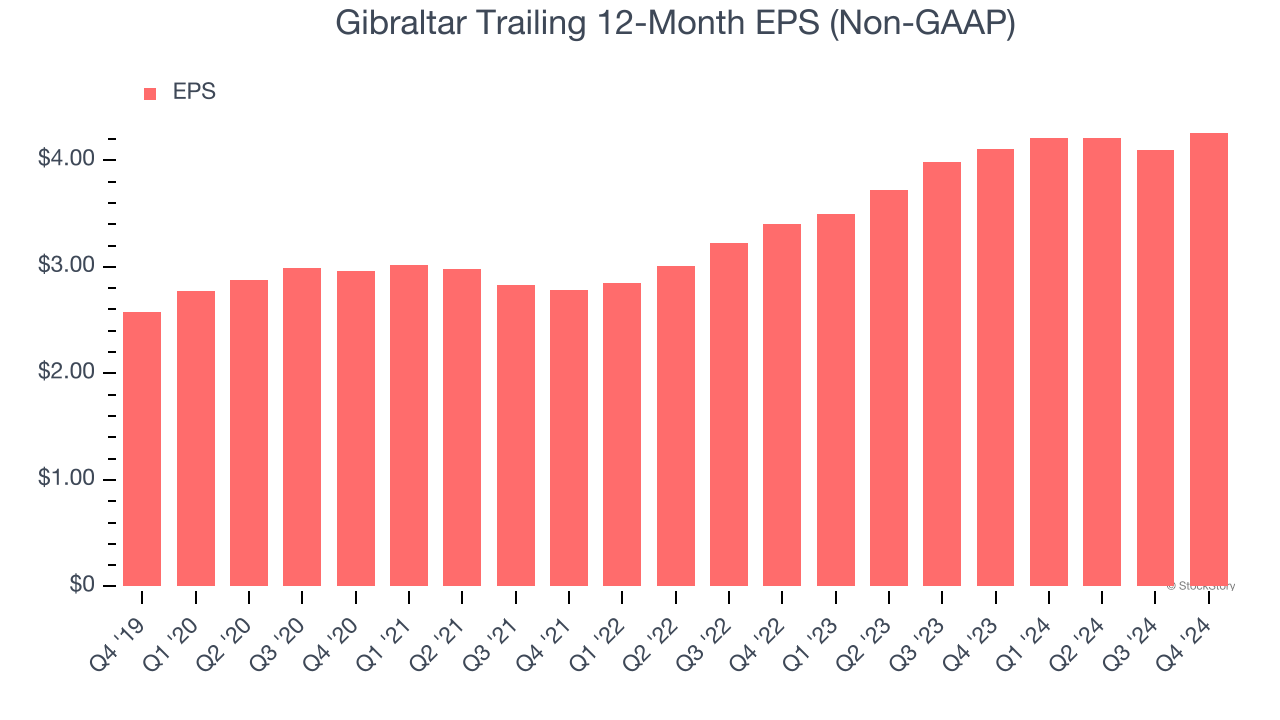
Like with revenue, we analyze EPS over a shorter period to see if we are missing a change in the business.
Gibraltar’s EPS grew at a remarkable 11.9% compounded annual growth rate over the last two years, higher than its 3% annualized revenue declines. This tells us management adapted its cost structure in response to a challenging demand environment.
Diving into the nuances of Gibraltar’s earnings can give us a better understanding of its performance. A two-year view shows that Gibraltar has repurchased its stock, shrinking its share count by 1.8%. This tells us its EPS outperformed its revenue not because of increased operational efficiency but financial engineering, as buybacks boost per share earnings. 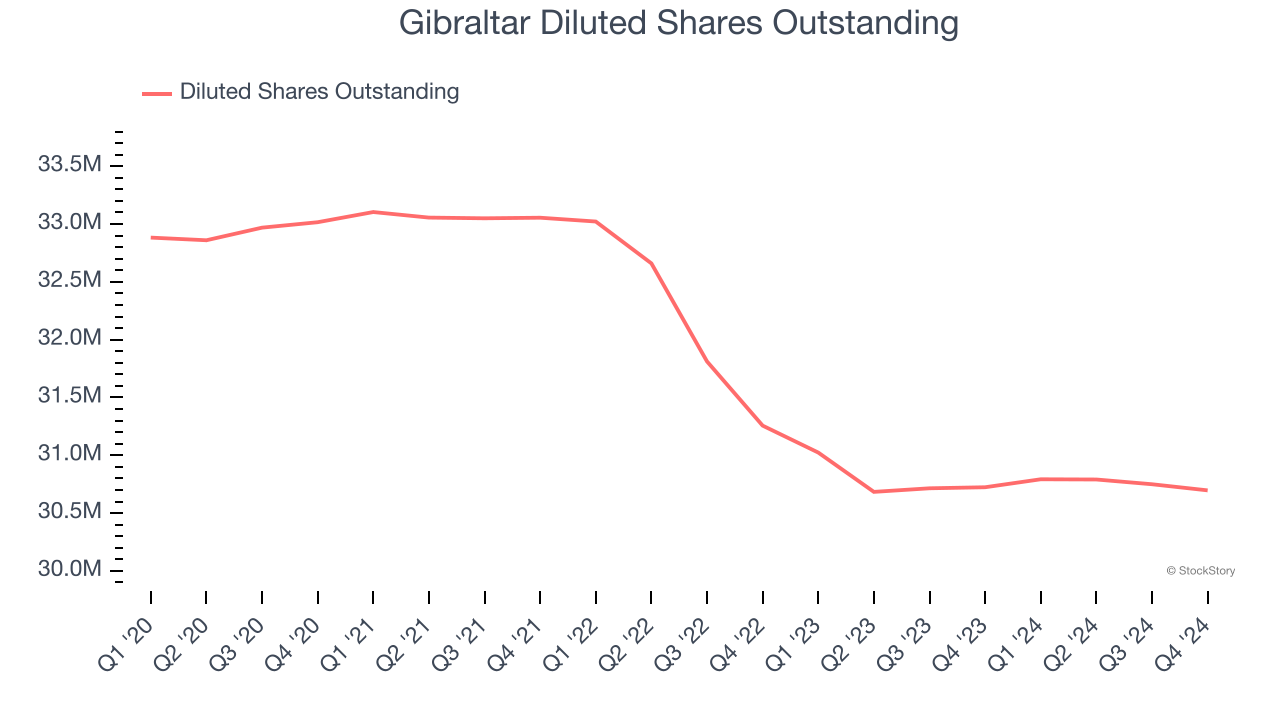
In Q4, Gibraltar reported EPS at $1.01, up from $0.85 in the same quarter last year. This print easily cleared analysts’ estimates, and shareholders should be content with the results. Over the next 12 months, Wall Street expects Gibraltar’s full-year EPS of $4.26 to grow 12.9%.
Key Takeaways from Gibraltar’s Q4 Results
We were impressed by Gibraltar’s optimistic full-year revenue, EPS, and EBITDA guidance, which beat analysts’ expectations. We were also glad its EPS and EBITDA outperformed Wall Street’s estimates. On the other hand, its revenue missed. Still, we think this was a decent quarter with some key metrics above expectations. The stock traded up 3.6% to $60.06 immediately after reporting.
Sure, Gibraltar had a solid quarter, but if we look at the bigger picture, is this stock a buy? The latest quarter does matter, but not nearly as much as longer-term fundamentals and valuation, when deciding if the stock is a buy. We cover that in our actionable full research report which you can read here, it’s free.

